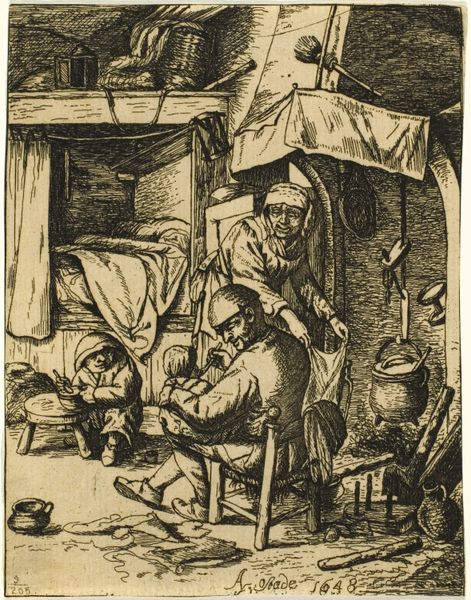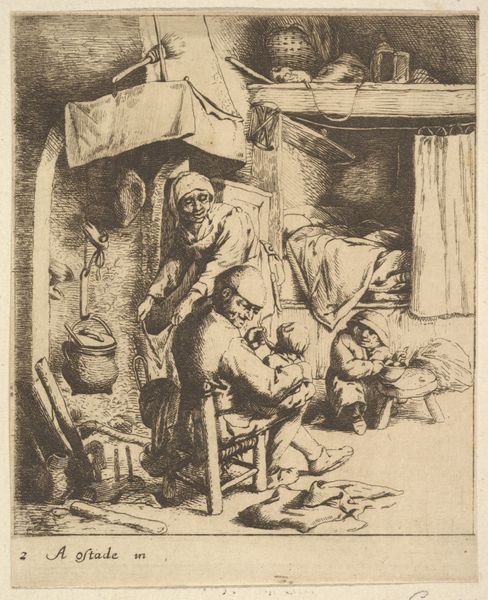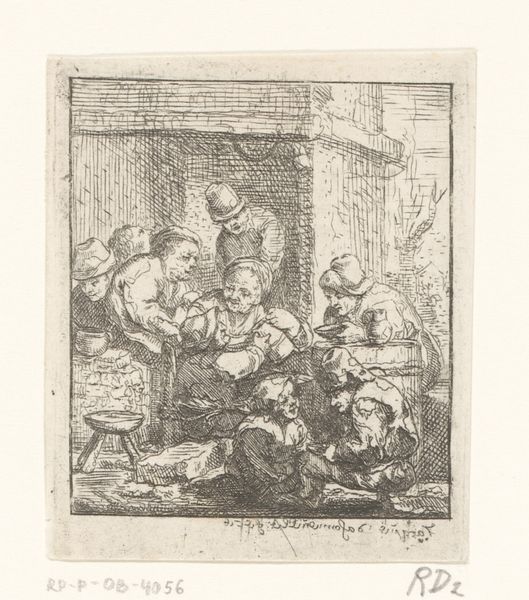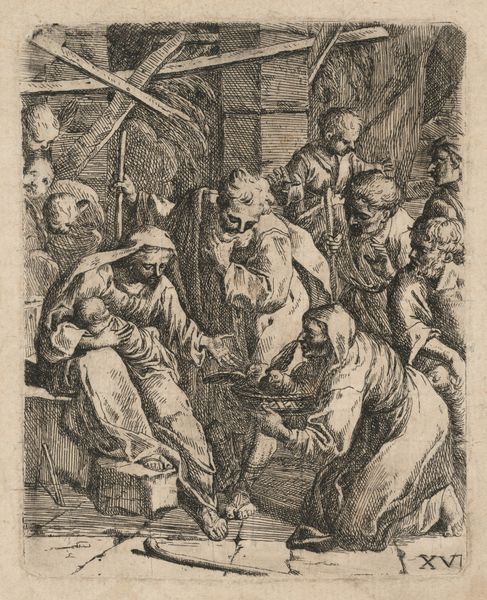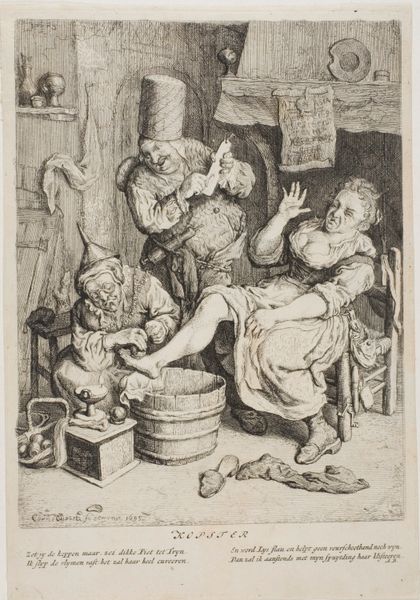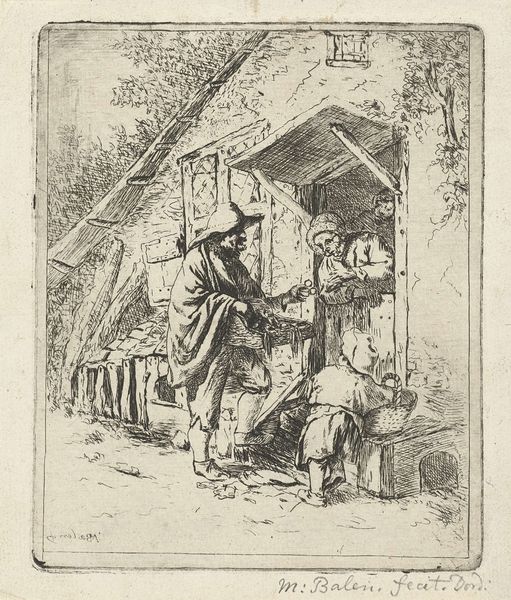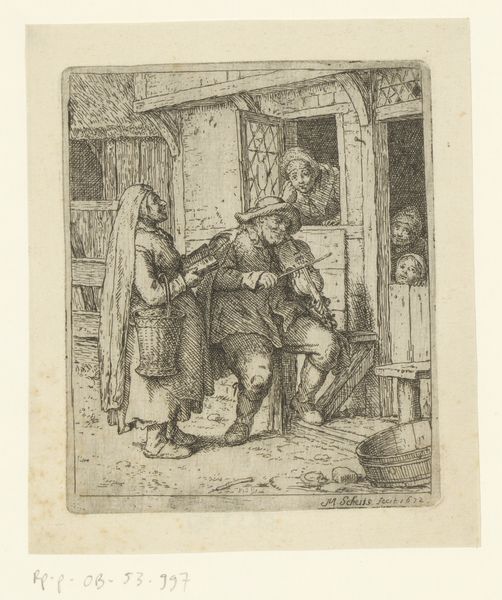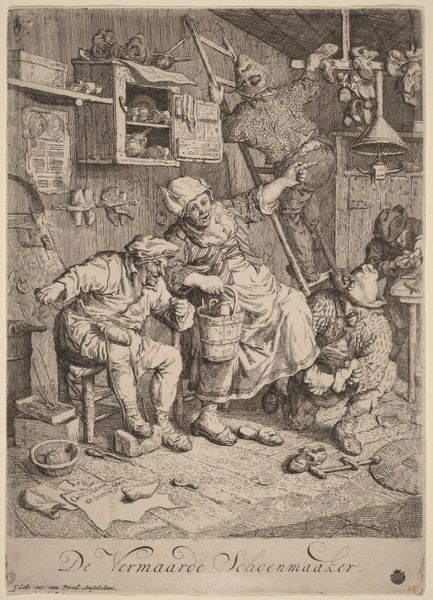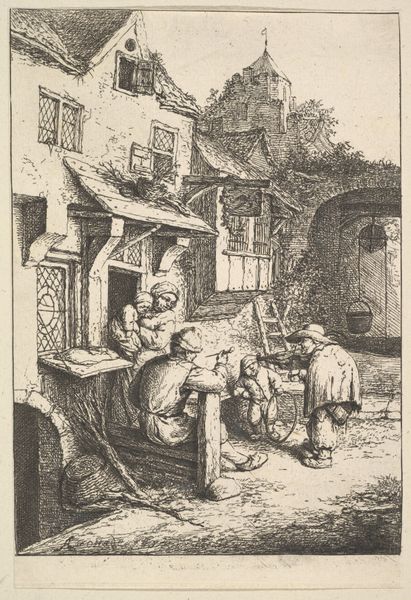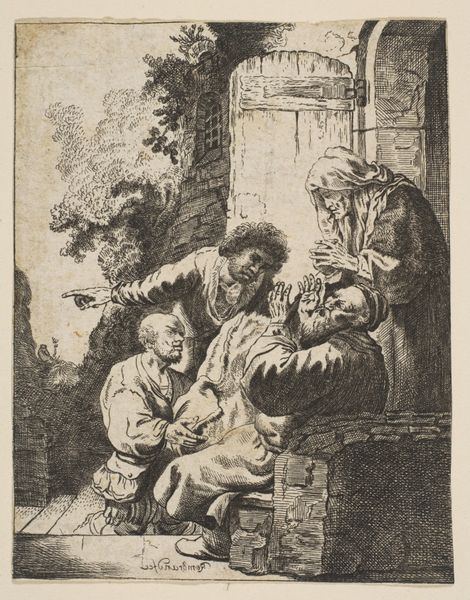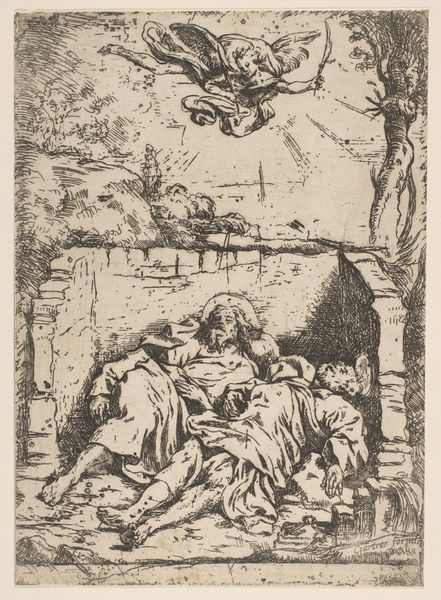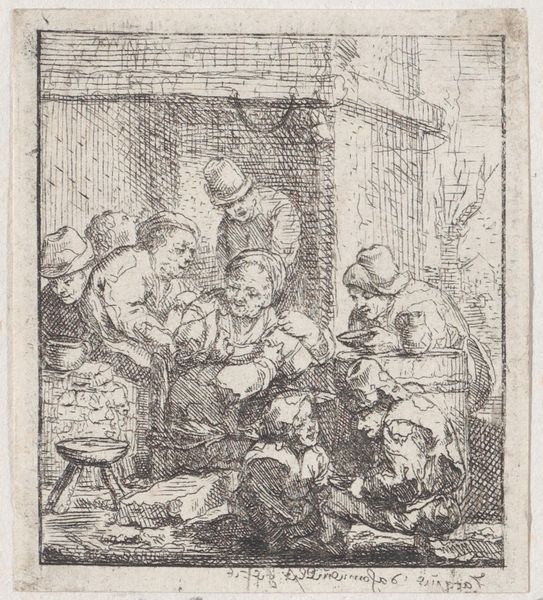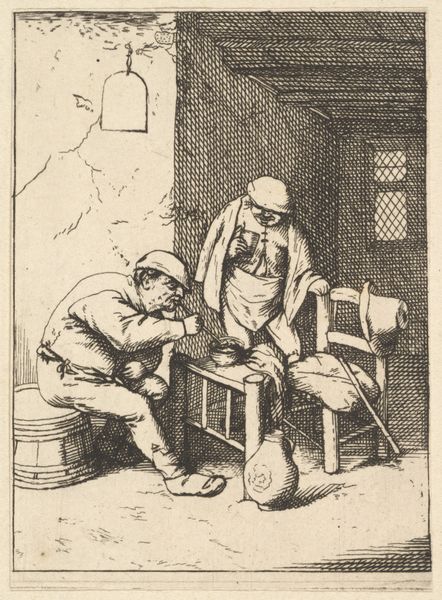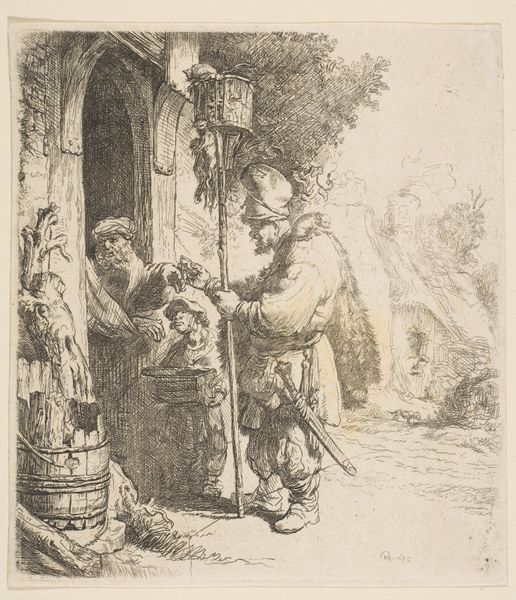
drawing, print
#
portrait
#
drawing
#
dutch-golden-age
# print
#
genre-painting
Dimensions: Sheet: 4 15/16 × 3 9/16 in. (12.5 × 9 cm)
Copyright: Public Domain
Editor: This is "Father Feeding his Child" by Adriaen van Ostade, dating back to the Dutch Golden Age, sometime between 1610 and 1685. It looks like it was done as a print. It depicts a family scene inside a humble home. The texture feels so alive, almost scratchy, but what strikes me is how intimate it feels despite the rough style. What catches your eye? Curator: The "scratchy" texture you mention comes from the etching technique itself. You can almost hear the quiet sounds of family life, can't you? It’s fascinating how van Ostade elevates the mundane – a father feeding his child – into something so emotionally resonant. There is a certain...gravitas. What do you make of the other family members lurking in the background, seemingly watching this scene? Editor: I hadn't thought of them as 'lurking'! I guess it seems a bit voyeuristic now that you mention it, but they could just be observing. Do you think it has anything to do with ideas around family life at the time? Like a commentary? Curator: It's a brilliant question. Dutch genre paintings often provide a glimpse into everyday life, reflecting the values of the time. Could the other family members represent the wider family unit, an important part of their society? Or is it, perhaps, a subtle commentary on poverty, with family members relying on each other? I tend to think it's a window into a real, if romanticised, moment, and not overly critical. There is something enduring about its simple premise. Does this new insight into historical and societal contexts reshape your initial interpretation? Editor: Definitely. It makes me see the work as less of a standalone snapshot and more like a reflection of bigger cultural narratives. Thanks for pointing that out! Curator: And thank you for sharing your initial interpretation. It's these first impressions that often unlock a richer understanding.
Comments
No comments
Be the first to comment and join the conversation on the ultimate creative platform.
